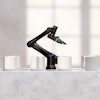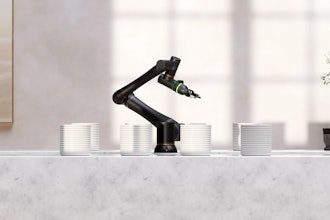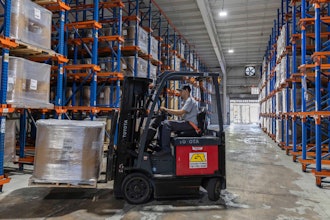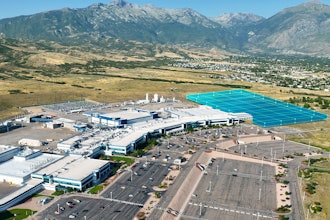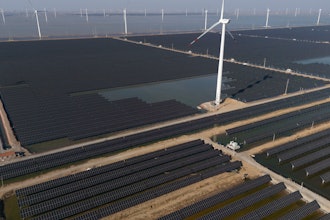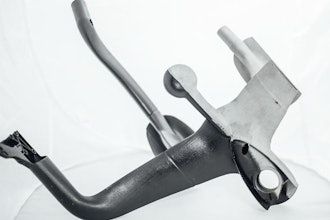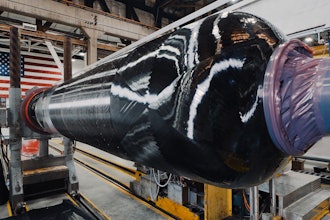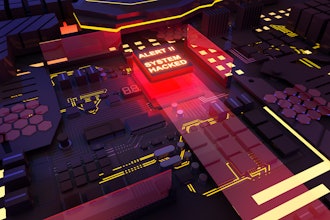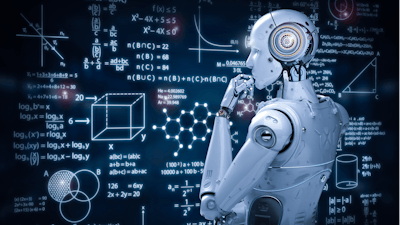
A new generation of point AI solutions will prove themselves in 2019. They’ll build new trust, urgency and understanding of what ‘AI’ actually is, and just how much it can deliver. Voice-driven solutions will lead the charge. And we’ll see pick-and-place robots in smart warehouses delivering a major competitive edge, as companies advance their use of Robotic Process Automation.
Here are my 3 key predictions for manufacturing for 2019—and beyond.
#1: 50 percent of all manufacturing companies will be using AI in some form by the end of 2021.
Make no mistake, the implementation of AI solutions will change everything. And I mean everything. Every industry, business, process and company. But let’s not forget: For many businesses, targeted AI solutions are already here! 2019 will be all about that new AI realism spreading, with new targeted, project-based AI solutions hitting the ground running.
A big stumbling block for AI has always been the term ‘AI’ itself. It misleads many manufacturers, suggesting a large end-to-end system. In reality, ‘AI’ is a collection of targeted technologies, from natural language processing to vision identification to chatbots to analytics to automation—each with its own strengths and applications. What they all share is the intelligence factor: a high degree of accuracy and an incredibly fast, smart ability to learn from their mistakes.
I saw that accuracy myself recently with an IFS customer in Northern Europe. As a household brand, they used an AI demand planning solution to forecast projected consumption in their sector. The accuracy of their forecast before and after the AI solution was eye opening. The demand planning forecast produced by the AI solution proved far, far closer to real market results. And forecast demand planning proved an excellent choice of application. For this business, a concrete, achievable target meant concrete, measurable results.
When thinking of AI, we need to remember that you can’t “implement AI” any more than you can “implement the internet”. Before you initiate any project, you must figure out your ‘why’. What exact business goal and target are you aiming at? What exactly do you want to improve and enhance? The more targeted your objectives, the more competitive and transformative your results.
#2: 25 percent of manufacturing planners will be talking to their systems by the end of 2020.
AI solutions are smarter and more eloquent than most of us realize. A year ago, a major AI customer survey found that two-thirds of people who said they had never used AI actually had, through chatbots. The quality was so high that the chatbots had been indistinguishable from human speech. The same survey found 84 percent of respondents were comfortable using voice-activated AI at home, in the form of Alexa, Siri or Home. And if simplicity, speed and accuracy are crucial consumer benefits, imagine what they could do on a manufacturing line.
BMW’s smart integration of Alexa into its models in March 2018 was widely applauded. The integrated voice activation went way beyond skin deep, adding layers of service and performance capability to the whole driving experience. What’s less well-known is that voice-activated solutions are also already being used on the production side of the automotive sector.
In Japan, one of our customers, NEC, are already using voice-activated solutions in their order picking process, where line personnel simply give spoken instructions and their order is instantly created. Which moves us swiftly on to…
#3: Pick-and-place robots will put away 25 percent of manufactured goods by the end of 2020.
Robots on the production line have been essential for decades. But what kind of savings and competitive edge will AI-enabled robots in the warehouse deliver? When Amazon made the headlines recently with their smart warehouses staffed with swift, inexhaustible robots, it became clear that robots raised the performance and savings bar hugely.
With no eyes or flesh, robots do not need lighting or heating, so energy costs plummet. There are no time or weight limits on breaks, shifts or loads. And the flexibility, fluency, reach and economy of robot-driven picking and placing means no wasted time or effort—and far better utilization of space. 24-hour, black-box warehouses will be able to store and do more, without having to get bigger.
And as it is with AI, so it is with robots. It’s already happening—with small, targeted use cases that will keep growing bigger. An example: we are currently working with one of our customers in North America to extend their use of robotics from loading boxes to complete material handling. For our customer, it’s another small step on their longer journey to digital transformation.
So full lights-out warehouses may be some years away. But it has begun. At IFS we’re already seeing innovative partner companies beginning work with automated warehouses. Heavy parts that may once have required a team of workers can now be plucked off the shelf by one robot with no wasted effort, no wasted time and no additional costs.
2019 will see the technologies in all these predictions gaining traction. They will become more targeted and more project-driven. More focused on achieving small, concrete improvement that will lead to big change.
For many companies, 2019 will be the year when they realize that actually, they don’t need to ‘climb an AI mountain’. They just have to keep taking the right, small steps to reach new heights.
Antony Bourne is the Global Industry Director for Marketing at IFS.

